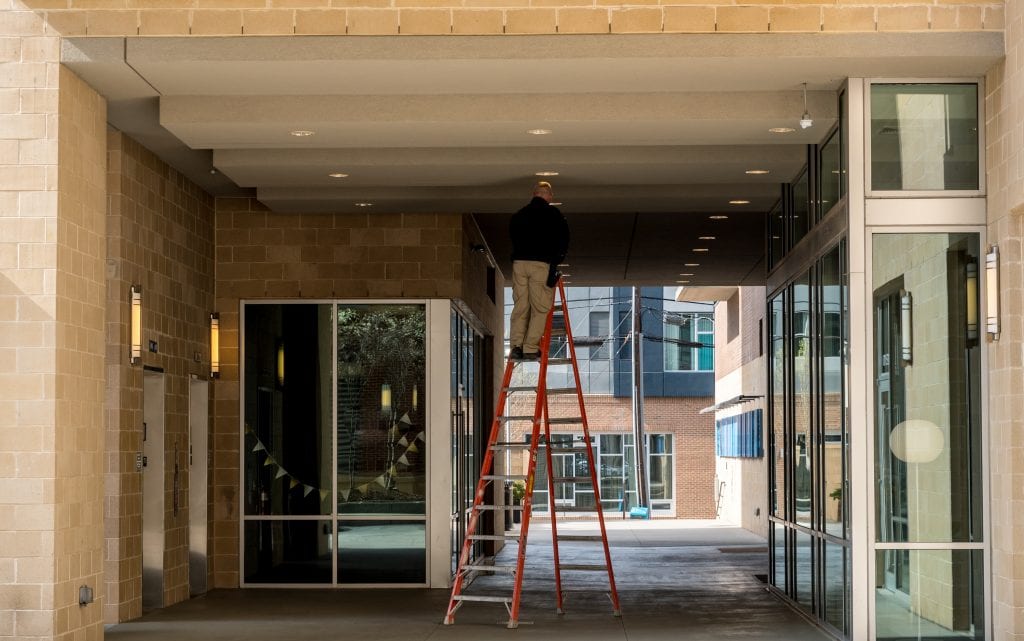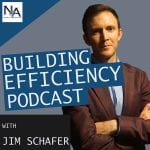System Reconditioning – FAQs
What is System Reconditioning?
System Reconditioning is applying the same steps of the quality assurance process used for new systems, called commissioning, to existing installations to optimize energy savings and system performance.
Lighting systems are typically reliable, but they are sensitive to user error. Often, users disable lighting and controls, whether purposefully or inadvertently, if they attempt to adjust the lighting. That can cause problems throughout the entire system, reducing energy savings and damaging performance.
While commissioning is required during the installation of a new networked controls system to ensure it meets all of the customer specifications and functionality, System Reconditioning is the process of evaluating how the existing system is operating—and eliminating systemic, repeated failure of the devices.
System Reconditioning typically involves four key steps:
- Determining goals and examining the current system to optimize programming.
- Functional testing of the existing lighting system.
- Identifying system deficiencies.
- Adjusting devices as needed to optimize system and save energy and costs.
System Reconditioning is an easy way to fine-tune your lighting system and ensure it is being used in the most energy-efficient way possible, all without replacing your costly lighting system. Because lighting can impact everything from worker productivity to consumer experience, System Reconditioning is a solid choice for businesses that want to ensure they are optimizing their existing assets.
What are the benefits of System Reconditioning vs. buying a new system?
Why should you scrap an existing wireless controls system that can still provide you with the functionality you need to manage lighting, HVAC, and more, with some basic upgrades? You shouldn’t.
System Reconditioning affords you the flexibility to enhance energy efficiency by using data points that were not available when your system was initially installed. Technology has advanced, and your system can too.
When your control system was set up initially, chances are, your only goal was to ensure that the lighting system worked properly. Now, we are able to upgrade your system’s software and add new hardware that was not available when it was first commissioned. This allows us to add more functionality to save your business energy and money and to provide a better experience for people who work and shop in your buildings.
What should I do/how do I know if my advanced-control system devices are not working properly?
Many times, systems are decommissioned unknowingly. This happens because these systems operate in ways that are not intuitive to the ways systems had been operating for the last 50 to 60 years.
When something is not working properly, facility managers typically have no one to call for support. In turn, they often reset the sensor or control device and if it is on a wireless system, it kicks them off the network. The lights stay on now, but the system is not working at its best. It’s not maximizing energy savings; it’s not using the data available to operate at peak performance.
Many times, lights are left on 24/7, so people in the building are satisfied, but the energy bills are high. This is a very common problem – even more than one might think. Today, there are services available to support businesses when an issue arises so they can ensure the building occupants and whoever is paying the electric bill are both satisfied, and systems continue to operate properly.
Often with cloud-based networked lighting systems technicians are able to fix problems remotely before they are even noticed by the building occupants, making it possible to achieve real-time preventative maintenance.
How do I keep my existing advanced controls system working when I’m expanding my facility and integrating new systems?
Every System Reconditioning project is different. It is important to determine your goals and examine how well your current system is working toward meeting those goals. In many instances, it is possible to bring your system into the 21stcentury with upgraded software that allows you to take the data that is available from your “smart” system and use it to your advantage. We now have the technological capabilities to intelligently use the data to put you on the right track toward energy efficiency and effectiveness.
Hybrid System Reconditioning installs are becoming more popular for growing businesses. When commissioned initially, many systems were not installed correctly and do not provide the flexibility needed in today’s business climate. Now, it’s possible to add the necessary functionality to your existing system and meet your future needs with a new wireless system extension. That allows you to harness the power of your existing assets while future-proofing your facility. The new wireless building management systems will never need to be replaced, only updated.
Do I really need a brand-new system?
Probably not. From a technical standpoint, when most of today’s systems were being installed, the notion of a cloud-based subscription service was not received well by consumers. Most businesses had an isolated server on a physical site and their system was secluded. Now that the industry is ready and willing to move toward cloud-based systems, we are migrating those isolated systems to the cloud.
What are the benefits of a cloud-based system?
The benefits of a cloud-based system are many. Now, technicians rarely need to come to the site for maintenance or repairs because they can access the system remotely. With the original systems, we wouldn’t know if the system was not functioning properly unless a customer advised us. Now, advanced lighting systems, when coupled with the right ongoing service partner, you’re able to proactively fix issues remotely before people on-site even know there was a problem.
What is System Reconditioning 2.0?
Simply put, System Reconditioning refers to upgrading your existing advanced lighting control system with the latest technology to ensure it meets the given sustainability and usage goals. What the industry is now calling “retro-commissioning or reprovisioning,” should really be called System Reconditioning 2.0. We are now able to upgrade the systems that were commissioned around 10 years ago with the newest technology and software upgrades.
Systems commissioned in the early 2000s are typically outdated and do not meet today’s energy efficiency goals. While energy efficiency was the main driver when purchasing lighting systems back then, today’s advancements in technology and software allow us to drive efficiency further than ever imagined 10-15 years ago.
Most facilities and building managers thought at that time that once the systems were commissioned, maintenance was not required as long as the lights were on. However, all systems need to be maintained and updated to ensure energy efficiency and system functionality. Unfortunately, there was a lot of misinformation out there, and most busy facilities managers took an “if it’s not broke, don’t fix it” approach, leaving their systems vulnerable to issues leading to energy waste and unnecessary costs.
The new systems commissioned today are truly “future-proof,” meaning we can upgrade them and add to them simply and relatively inexpensively, without starting from scratch in the future. This can result in a 95% energy savings when done correctly, proving that System Reconditioning 2.0 will position your building for the future in the most cost-effective way possible.
How do I know if my advanced lighting control system is working properly?
Ask an expert, like SBT Alliance, who can access your system remotely or supply you with diagnostic equipment so we can do a full Controls System Audit. It will help determine how well the system was commissioned, what issues exist, and how they can be fixed.
What kind of maintenance is required for advanced control systems?
Quarterly maintenance, or at minimum annual maintenance, is required to keep an advanced networked control system running smoothly and at peak performance. There is no downtime during routine maintenance and a technician can typically service the system remotely.
In the past, facilities staff were required to learn how to operate these systems. However, that is no longer the case. Poorly trained staff are capable of making changes to the system that can cause it to use more energy than before it was installed. Now, third-party technicians can securely access the system remotely when there is an issue and resolve it quickly with minimal intervention from the facilities or building manager.
Is my facility a candidate for System Reconditioning?
If you answer “yes” to any of the following questions, your facility is likely a candidate for System Reconditioning.
- Do you use an advanced control system?
- Was it installed within the last 10 years?
- Is it networked?
- Is it wireless?
- Has the lighting been behaving oddly?
- Are any building occupants complaining about lighting?
- Has it been evaluated by a professional technician in the last four months?
If you still are unsure, call an expert, like SBT Alliance, to evaluate your system.
How can advanced control systems help meet our efficiency, productivity, and profitability goals?
It is important to remember that just because you have an advanced networked control system and you think you are saving energy; it doesn’t mean that you are. When you have a support partner, like SBT Alliance, with the expertise to ensure the system is running efficiently and saving you money, then you can be sure you are optimizing your system to best meet your goals and help your business generate revenue.
Often, a controls system audit will reveal additional opportunities to gain efficiency, productivity, and profitability. Now, we can use the abundance of data the system collects and big data analytics to improve the efficiency of your warehouse staff or to know where to place certain products in a retail environment to increase sales, for example. In the System Reconditioning process, there should be opportunities to better understand how a space is utilized so that the project can be fine-tuned to meet real business needs and financial goals.
How do I incorporate System Reconditioning into my growth strategy? How can I ensure my system will grow with us in the future?
The process of System Reconditioning will get your system working properly. You can fine-tune your existing system to meet your company’s needs today while adding on functionality that will take you into the future. Today’s advanced networked lighting systems have functionality that most people don’t know is even possible.
You can now leverage the various data points the system offers to help you make better business decisions while your business grows into the future while receiving support from a company whose expertise is advanced lighting control systems.
My system isn’t working properly and we don’t have the budget for all new equipment. What can I do?
Most businesses do not need new equipment. Existing, older systems can be reconditioned to meet the specifications of your business now.
Your first step should be to contact an advanced lighting system expert, like SBT Alliance, to conduct an audit. A thorough audit will give you an overall picture of your system’s health and will help you to prioritize how best to spend your capital budget.
How do we know if our advanced control system is really saving us money, energy, and capital costs?
Lighting accounts for one-third of electricity use in New York City commercial buildings, according to a 2010 Con Edison report. Finding a way to reduce energy is a worthwhile endeavor and advanced lighting system experts, like SBT Alliance, can make it a painless process.
First, you will need to benchmark your facility’s current energy usage. You can do this with a professional audit that looks at your existing system inventory—any machinery that uses energy, lighting included—to determine how much energy is being used. From there, a professional advanced lighting controls consultant can explain where higher efficiency can be achieved.
Once the project has been completed, the vendor should do another audit to ensure your money, energy, and capital cost goals have been achieved with the advanced control system.
How can I ensure my wireless networked controls system is operating as efficiently as possible?
The one way that you can know for sure how efficiently your HVAC and lighting system is operating is with an audit by a professional advanced wireless controls system specialist, like SBT Alliance. Once you are sure your system is reconditioned to meet your needs, it is important to monitor your system for any issues. SBT Alliance can do that for you, all remotely, in real-time. End-users can be notified of issues as little or as much as they want with custom alerts. Regardless, a vendor like SBT Alliance will handle any issues without the need to burden you with the details, unless you want them, of course!
When you partner with the experts, you can rest assured that your system is always operating at peak performance—even while you’re sleeping! With remote monitoring capabilities, you never have to worry about your system because it can be monitored, and many times, even repaired, without your intervention.
Today’s advanced lighting controls are networked and, therefore, highly flexible. They allow you to check on the status of sensors and fixtures across a facility which is very helpful for troubleshooting. Networked systems can gather data and report on occupancy patterns, energy use, system performance—giving you more control over how and where you enhance energy efficiency.
Who should be involved in my reconditioning project and what kind of training will they need?
The project team may consist of maintenance, facility and general managers, building owners, and other leaders. Ideally, you should choose an advanced controls system partner who will manage the project for you from beginning to end. Although advanced lighting and HVAC system technology has advanced dramatically in the last 5-10 years, it is complex, so the project should be managed by a wireless control system expert. This is typically not a case of DIY.
Minimal training is required to operate today’s more advanced networked controls systems, but SBT Alliance does recommend that major stakeholders have a general understanding of how their system works and its capabilities. Whether you feel most comfortable with a two-hour web-based training or a three-day on-site training, you can choose the right level of training for your needs.
How can I recondition my lighting on a budget?
System Reconditioning is less expensive than you might think. When you consider the average energy savings of 50%, comprehensive lighting upgrades typically payback within 3-5 years, with even shorter payback for simpler upgrades.
After you have an audit performed by an advanced wireless control system expert, you can take a look at your system’s deficiencies and prioritize them to optimize your budget. If you have an older system that uses older lighting and control technology, then we can plan a new project in phases to fit your budget. If upgrading your lighting is too much of a challenge from a budget perspective, your system can still be reconditioned at a lesser cost.
What kind of savings can I expect? (energy, LED maintenance, driver maintenance, rebates)
Advanced system controls, paired with high-efficiency fixtures can deliver energy savings of up to 75% (and in some cases even upwards of 95%!). Businesses that install advanced lighting solutions can increase their payback through demand-response programs through local utilities who offer incentives for reducing electrical load when the grid is on high demand. Many programs are available that offer additional rebates and savings. You can also expect maintenance savings resulting from not servicing the lights.
Why doesn’t my original lighting system work for my space anymore?
Over time, spaces within a building can be used for different purposes. Sometimes new tenants from a different industry, with very different lighting needs, now occupy a space.
What is a lighting control intent narrative and why do I need one?
The lighting control intent narrative explains the strategies for controlling the lights and the system components in general. It explains in detail how various parts of the building are controlled and outlines the savings derived in each area.
A lighting control intent narrative is typically developed for large projects in which extensive renovations are being completed. Often, a lighting control intent narrative is required for utility rebates. They can also be used for business cases to sell the idea internally to management.
How can you support me when my lighting system doesn’t work how it’s supposed to?
With real-time monitoring, an advanced lighting system professional can ensure that your lighting system is operating at peak performance. Whether your system requires on-site work, collaboration with an electrical contractor, or remote service, an expert, such as SBT Alliance can help.
What should I consider when deciding whether to recondition my system?
First, consider the benefits. Not only are there energy and cost savings with a System Reconditioning project, but a well-designed lighting system can also contribute to greater occupant comfort and productivity, and enhanced consumer experiences in retail environments.
In addition, advanced lighting systems provide data-gathering capabilities that can aid your decision-making on a number of topics.
How often do I need to recondition my system?
Although maintenance is required several times a year, a system will only need to be fully reconditioned once.
How have you helped a business like mine become more energy efficient?
Yep… you can read more about how we’ve helped businesses like Rich’s Food and the City of Santa Ana transform into a SMART spaces.







Recent Comments